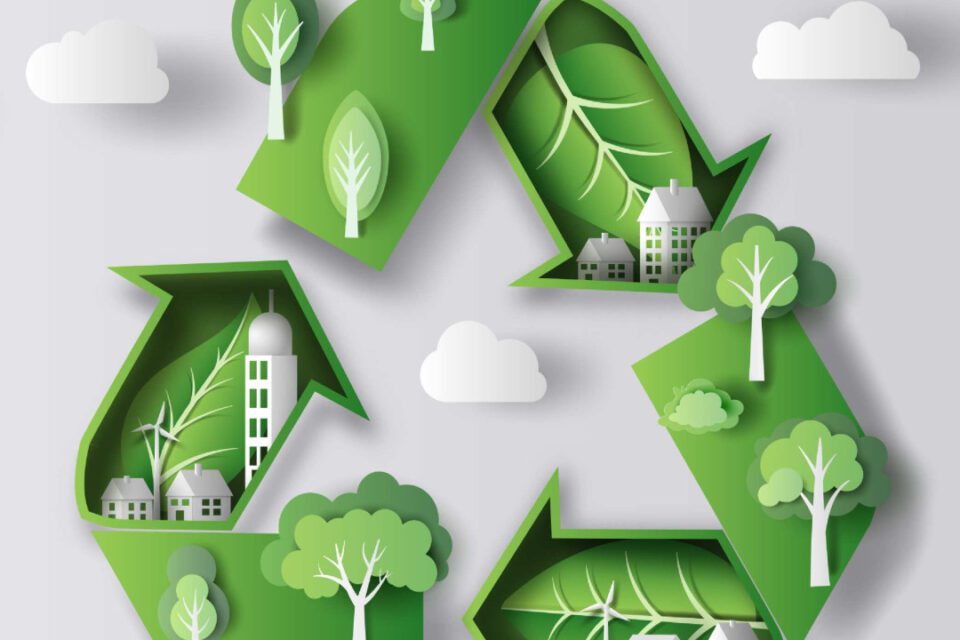Peter Drucker asserted that “doing the right thing is more important than doing the thing right”.
What society considers “the right thing” changes over time as a function of societal preferences and external circumstances. Water resources management is no exception to the historic pattern of gradually shifting priorities.
What have been the ‘frameshifts’ in water resources management over the last 60 years?
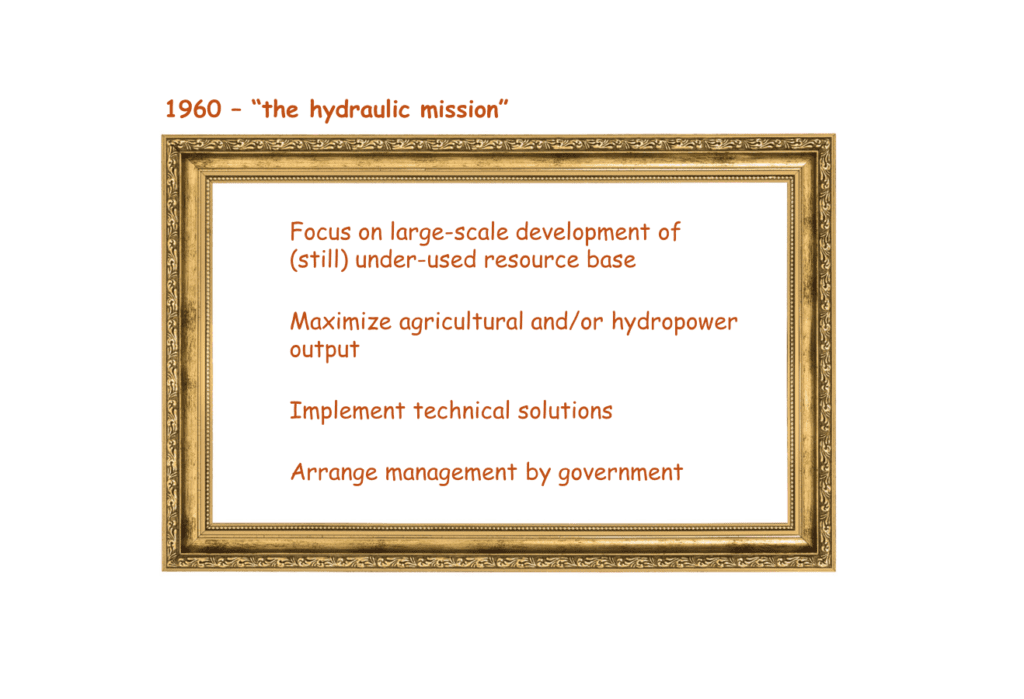
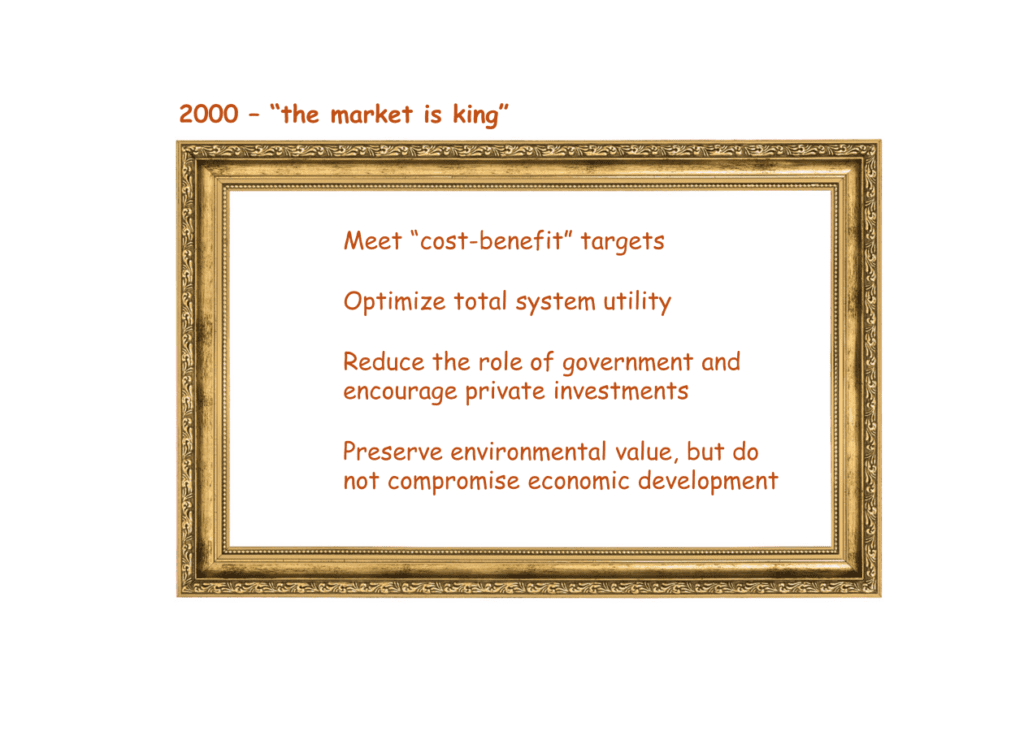
While most water resources issues are local, there are overarching themes that define a distinct period in time.
The period anchored by the 1960s can be characterized as the ‘hydraulic mission’. Large-scale engineering solutions initiated, implemented, and managed by government aimed to maximize hydropower and agricultural output and provide flood protection. This was the era of large dams and large public irrigation schemes, in which environmental value was often sacrificed for socio-economic development.
It was succeeded by the “market is king” epoch that preferred to replace government by the private sector with its short-term profit motive. The era was ruled by the sacrosanct cost-benefit analysis. This concerns a short-term economic optimization tool that is ill-suited for water resources management because 1) WRM requires a long-term perspective, often spanning generations, and 2) the emergent functions of most long-term WRM infrastructure elements are ignored. Further, while lip service was paid to maintaining environmental value, environmental considerations often lost out to maximizing short-term economic output.
It seems that the “market is king” era is now ending. What will be next?
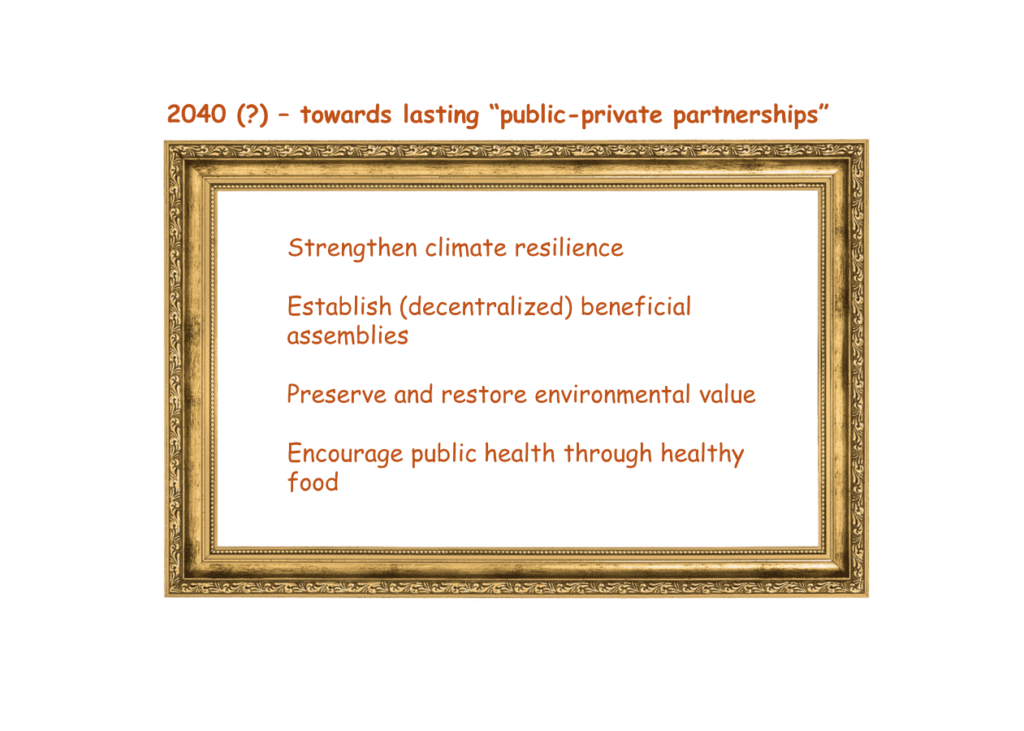
Predicting the future is a risky game but I will attempt to identify overarching themes in water resources management that could become prominent in the years to come.
Strengthening climate resilience is obvious in view of the emerging climate crisis and the associated ‘global weirding’. I also expect that society will attach more value to preserving and restoring environmental value. Partly because rewilding (which is an effective and cheap WRM tool) is becoming easier with dwindling rural populations in many countries—specifically in the global north—but also because biosphere integrity has been severely compromised and researchers such as Johan Rockstrom (in his brilliant documentary “Breaking Boundaries”) assert that its planetary boundary has been crossed and that this could destabilize the very life-supporting system that we depend upon for our livelihood and survival.
My sense is that sustainable water resources management will be based on decentralized beneficial assemblies—because they provide local solutions, are cheap to manage and maintain, and contribute to climate resilience. These beneficial assemblies are probably implemented as public-private partnerships.
The final future theme I anticipate is a long shot. It emphasizes that “your garden is your health care provider and pharmacy” (or, as some people write, your “farmacy”). When we talk about food, of course, we talk about water, since agriculture is by far the dominant water user.
Remarkably, food that is good for you is also good for the environment, our depleted soils, our scarce water resources, and the biodiversity of plants, animals, and pollinators, and it helps reverse climate change (Mark Hymans, Food Fix, p55)
A healthy and environmentally sustainable food production system—that addresses concerns about water scarcity and supports rural development and climate resilience—is based on local produce, short supply lines, and higher farmgate prices (“you either pay your doctor or your farmer….”). It often resembles the traditional farming system, which can serve as the starting point for agricultural modernization. When societies become richer and older, they may prioritize healthy food as a key strategy to manage health care costs.
Robust decision making in WRM by 2040
The main themes presented above translate into the below decision tree.
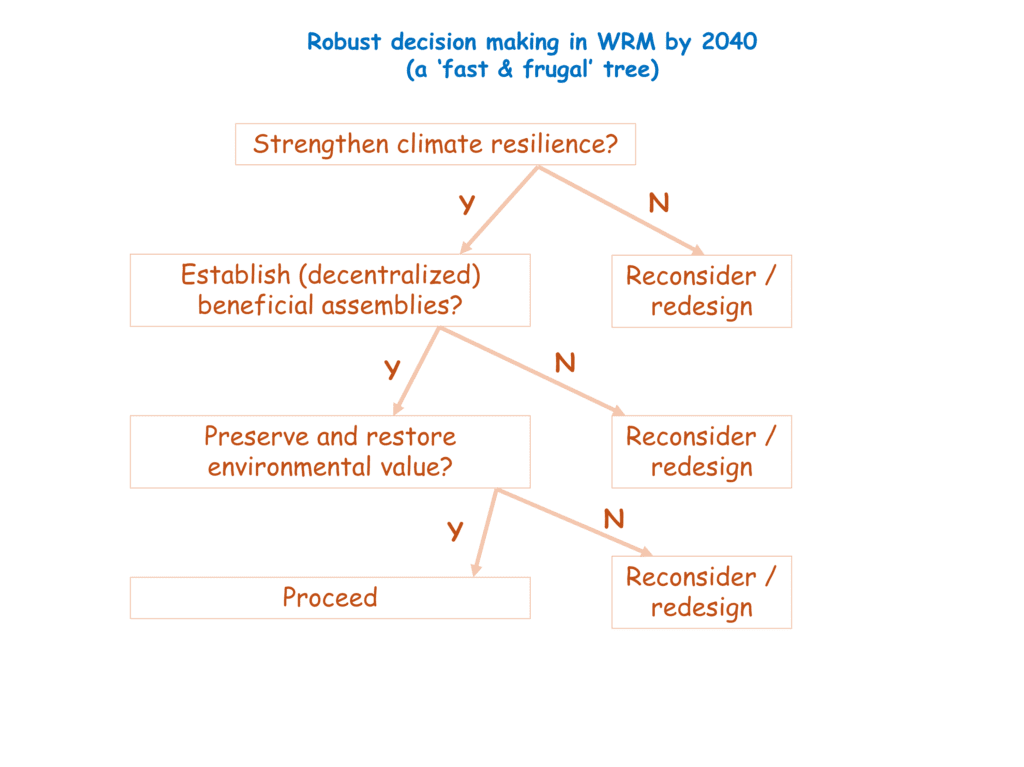
It is a fast & frugal heuristic. In fact, it is embedded in the “three-point checkup for WRM interventions” discussed in a previous post. The latter—also a heuristic—aims to quickly exclude measures that 1) are just not necessary, 2) do not focus on priorities, and 3) are not effective. Thus, it rapidly and efficiently—in a few steps—separates interventions that are potentially useful from those that are not effective and should not be further considered.
Using fast & frugal heuristics makes efficient use of scarce mental resources. According to Gerd Gigerenzer—a German psychologist—humans are hard-wired to ignore ‘webs of complexities’ and consider instead only a few factors when taking decisions, as illustrated in the above decision tree.
Decision rules incorporated in heuristics are based on intuition, past experience, expert advice, research results, cost, emotion, fear, cultural norms, laws, etc. They aim to expedite decision making and make conscious rational decisions in a context that is characterized by inadequate managerial capacity in terms of staff and information, time pressure, and persistent cognitive limitations.
Thus, heuristics strive to create a simple and rational (‘simply rational’) decision making process for complex water resources issues.
